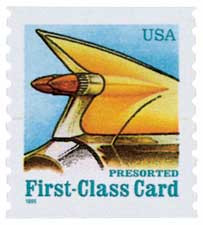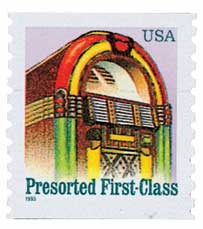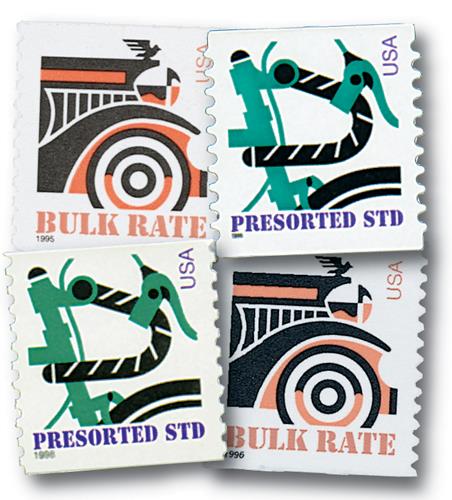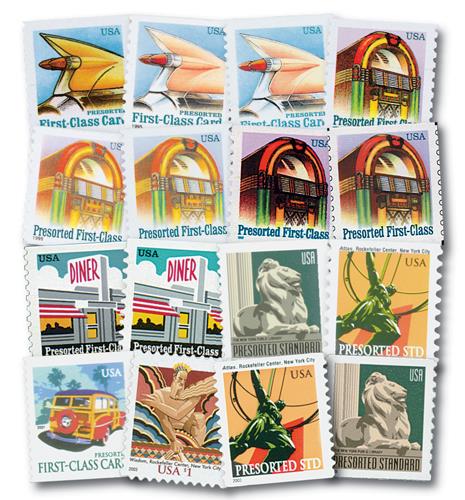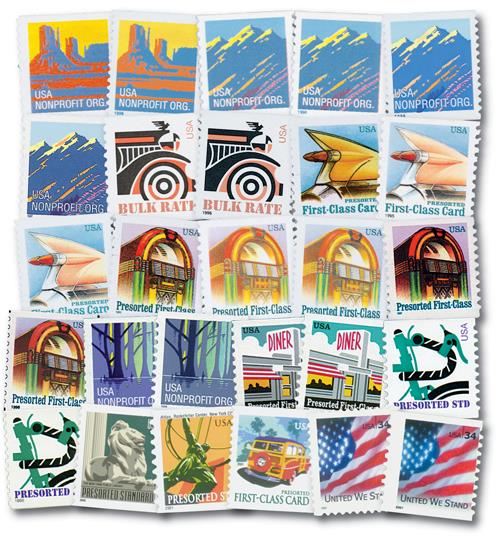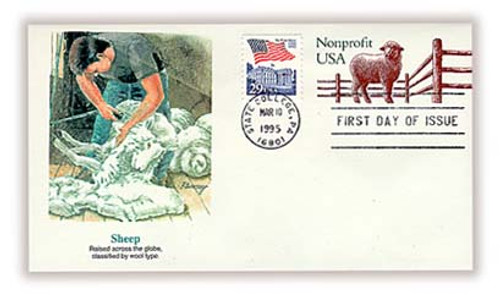
# U635 - 1995 5c Sheep PSE FDC
American Scenes & American Transportation Series
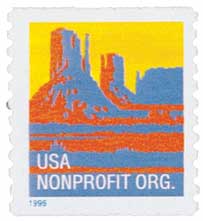
On March 10, 1995, the USPS issued the first stamps in two new definitive series – American Scenes and American Transportation (not to be confused with the Transportation Series).
These two series, as well as the American Culture Series, were created for 1995 as part of the USPS process of converting its service-inscribed stamps for discounted bulk mail to non-denominational postage. Bulk mailers could buy the appropriate stamps at a fixed price, affix them to their mail, and then pay the difference between the cost of the stamps and current postage when they mailed them out. This was done so that new stamps wouldn’t need to be created when rates changed.
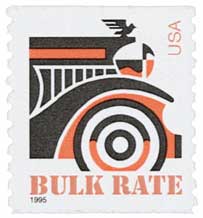
The first American Scenes and American Transportation stamps were issued on March 10, 1995, at the Scopex stamp show in State College, Pennsylvania. During the ceremonies, a representative from the Citizens’ Stamp Advisory Committee dedicated the stamps and said that “The new discounted-rate stamp designs will have the service inscription printed on them, continuing the idea brought back with the Canoe and Tractor-Trailer designs, but without the partial values on those stamps. It is well known that mailers, the public, and the stamp collectors like to see both a variety of designs as well as changes in designs. Starting with this rate change, each type of discount rate will have its own non-denominated stamp series. It is also planned to perhaps change the designs in each series yearly.”
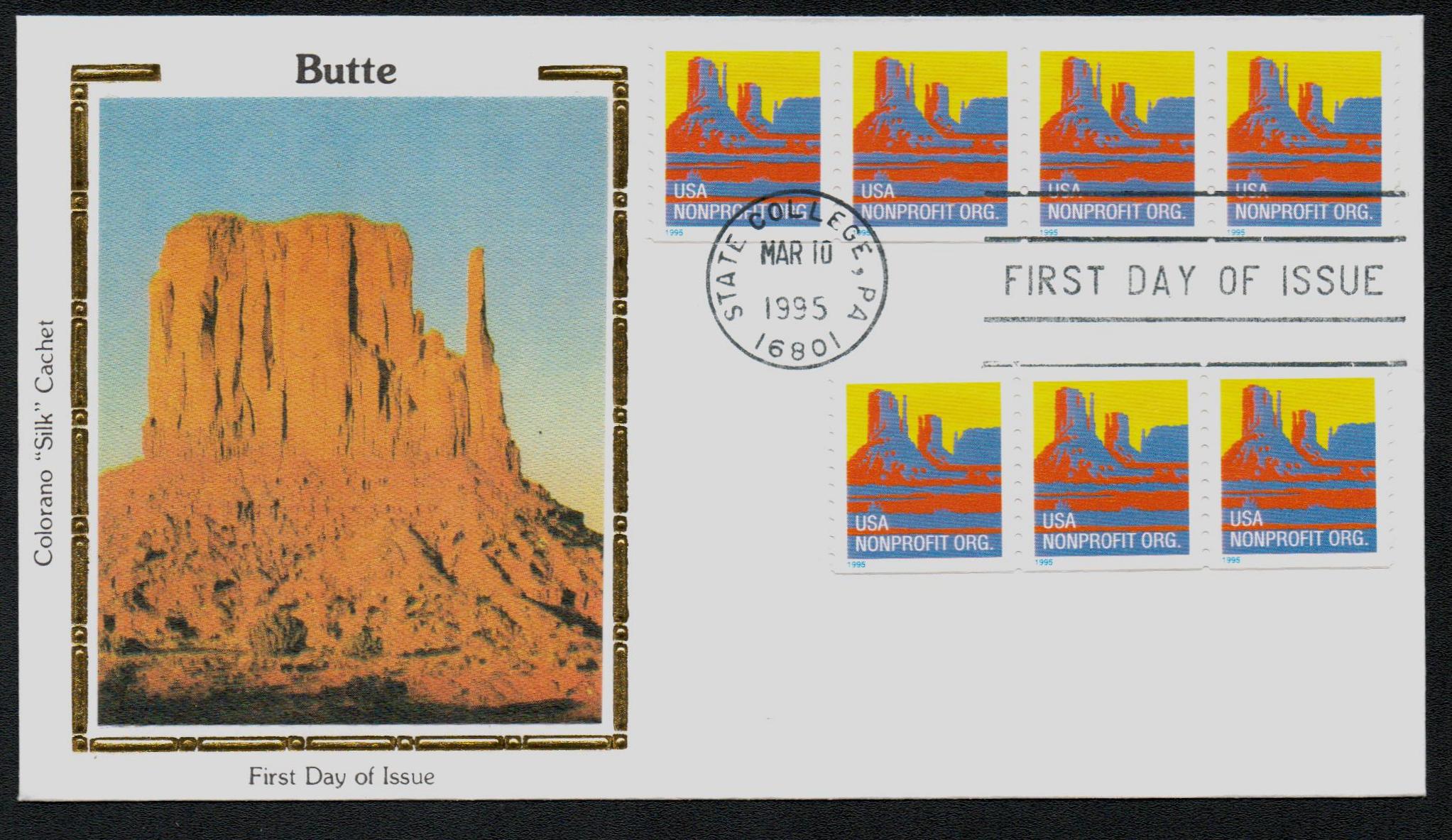
The 5¢ Butte stamp (from the American Scenes series) was issued for use on bulk rate (third class) non-profit mail. According to the USPS, the American Scenes series would “highlight features of scenes and not the sweeping scenes [as seen] on the scenic America and America the Beautiful postcard series.”
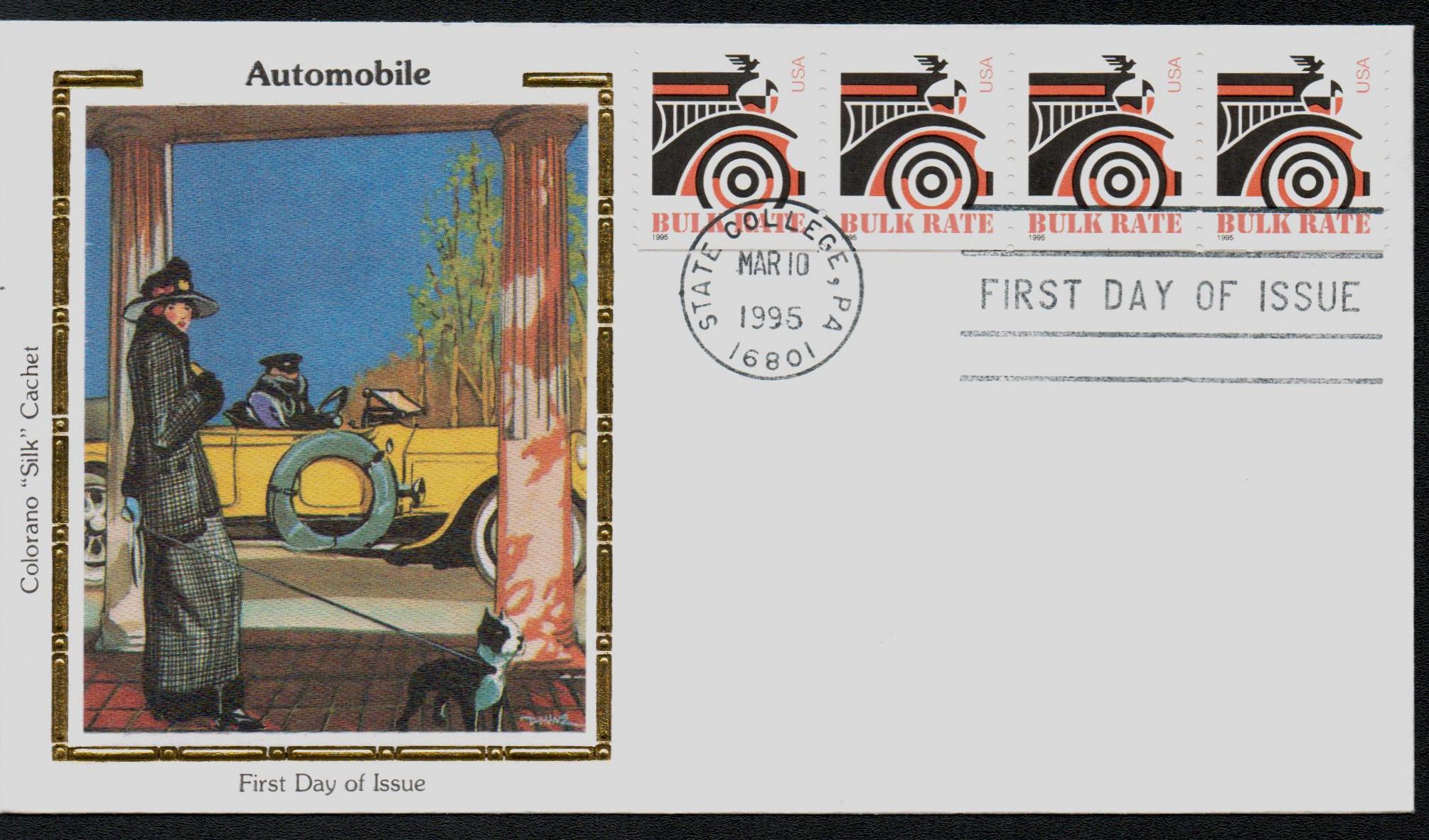
The 10¢ Automobile stamp (from the American Transportation series) was issued to fill the regular third-class rate. The USPS said this new series would “depict details of the various means of transportation in multicolor photogravure, unlike the complete vehicles in the single-color engraved Transportation Series.”
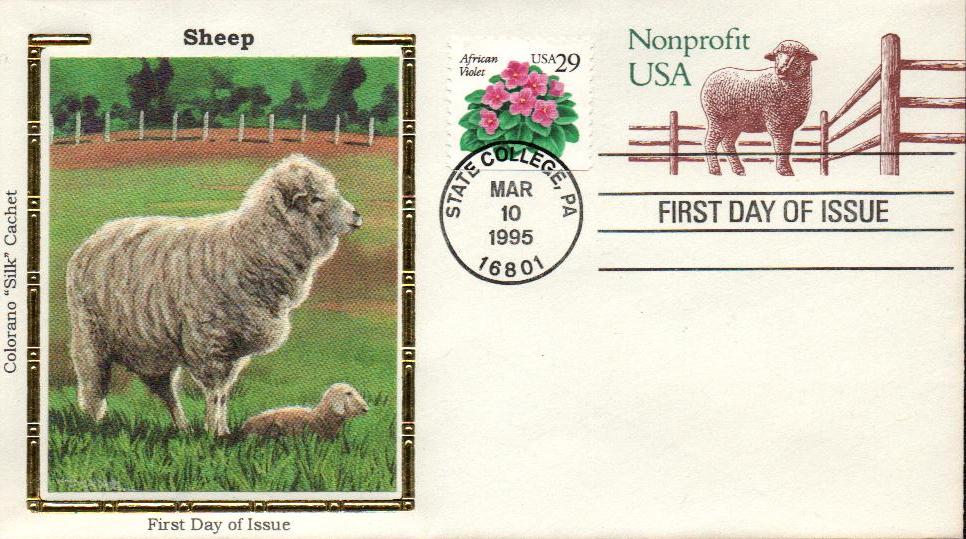
Also at the show, the USPS issued a third-class nonprofit envelope picturing a sheep and a third-class bulk-rate envelope picturing a graphic eagle.
The first stamps in American Culture series were issued a week later on March 17 at the Postage Stamp Mega-Event at Madison Square Garden in New York City. The two issues were a 15¢ Auto Tail Fin for pre-sorted first-class postcards and a 20¢ Jukebox for pre-sorted first-class letter mail. In describing the new series the USPS said it would “take a look at American creativity and at things that no other country could claim.”
New stamps in each of these series continued into the 2000s with designs including mountains, wetlands, bicycle handlebars, a diner, and more.
American Scenes & American Transportation Series

On March 10, 1995, the USPS issued the first stamps in two new definitive series – American Scenes and American Transportation (not to be confused with the Transportation Series).
These two series, as well as the American Culture Series, were created for 1995 as part of the USPS process of converting its service-inscribed stamps for discounted bulk mail to non-denominational postage. Bulk mailers could buy the appropriate stamps at a fixed price, affix them to their mail, and then pay the difference between the cost of the stamps and current postage when they mailed them out. This was done so that new stamps wouldn’t need to be created when rates changed.

The first American Scenes and American Transportation stamps were issued on March 10, 1995, at the Scopex stamp show in State College, Pennsylvania. During the ceremonies, a representative from the Citizens’ Stamp Advisory Committee dedicated the stamps and said that “The new discounted-rate stamp designs will have the service inscription printed on them, continuing the idea brought back with the Canoe and Tractor-Trailer designs, but without the partial values on those stamps. It is well known that mailers, the public, and the stamp collectors like to see both a variety of designs as well as changes in designs. Starting with this rate change, each type of discount rate will have its own non-denominated stamp series. It is also planned to perhaps change the designs in each series yearly.”

The 5¢ Butte stamp (from the American Scenes series) was issued for use on bulk rate (third class) non-profit mail. According to the USPS, the American Scenes series would “highlight features of scenes and not the sweeping scenes [as seen] on the scenic America and America the Beautiful postcard series.”

The 10¢ Automobile stamp (from the American Transportation series) was issued to fill the regular third-class rate. The USPS said this new series would “depict details of the various means of transportation in multicolor photogravure, unlike the complete vehicles in the single-color engraved Transportation Series.”

Also at the show, the USPS issued a third-class nonprofit envelope picturing a sheep and a third-class bulk-rate envelope picturing a graphic eagle.
The first stamps in American Culture series were issued a week later on March 17 at the Postage Stamp Mega-Event at Madison Square Garden in New York City. The two issues were a 15¢ Auto Tail Fin for pre-sorted first-class postcards and a 20¢ Jukebox for pre-sorted first-class letter mail. In describing the new series the USPS said it would “take a look at American creativity and at things that no other country could claim.”
New stamps in each of these series continued into the 2000s with designs including mountains, wetlands, bicycle handlebars, a diner, and more.






